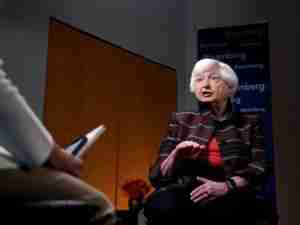Bank of Spain Upgrades Growth Projection for 2016 Amid Risks
By: Maria Tadeo | Sep 29 2016 at 06:44 AM | International Trade
The Bank of Spain upgraded its economic growth projection for 2016 even as it warned of risks of fiscal slippages due to a lack of reforms amid an ongoing political deadlock that has left the nation without a government for nine months.
Output is expected to grow 3.2 percent this year, compared with a June forecast of 2.8 percent, the Madrid-based central bank said on Thursday, citing improved perspectives for the rest of 2016 and more favorable developments in activity in the second quarter. The institution predicts that gross domestic product grew 0.7 percent in the third quarter, a slight decline from the pace registered in the previous three months.
“If uncertainty had an impact, it hasn’t manifested or it’s been counter-balanced by other factors,” Pablo Hernandez de Cos, the central bank’s Director General of Economics, Statistics and Research, said in Madrid, referring to the struggle to piece together a working government after two inconclusive elections. “The longer this period continues, the more likely these factors could be materialized.”
Going into the 2017-2018 period, the Bank of Spain sees a slowdown. It expects the economy to grow 2.3 percent next year and 2.1 percent in 2018 as one-off factors that have kept the economy going—the depreciation of the euro, a decline in oil prices, the pass through of easier financing conditions— begin to fade. The bank also sees risks when it comes export activity based on the assumption of declining global trade and the impact of Brexit.
Meanwhile, it sees prices rising by about 1.5 percent in 2017 and about 1.6 percent in 2018 in line with expectations of rising oil prices and core inflation. Separate preliminary data earlier Thursday by the Spanish National Statistics Institute showed that September consumer prices rose year-on-year for the first time since mid-2014.
While the Spanish economy has shown strength in the face of political deadlock, the Bank of Spain sees risks for fiscal targets due to the lack of government action. After missing its deficit-reduction goal last year, Spain faces demands from European authorities to narrow its public deficit to 4.6 percent of output this year and 3.1 percent in 2017. Without reforms aimed at tackling its shortfall, the central bank expects Spain to miss those targets, with the deficit coming in at 4.9 percent and 3.6 percent respectively.
“Without additional measures, there is a risk of non-compliance,” said Hernandez de Cos. “What we’re saying is that fiscal policy should take on a restrictive tone to meet these targets. That’s the message.”








